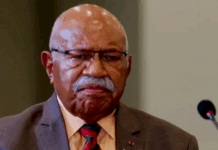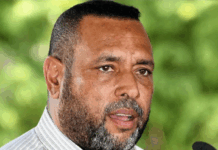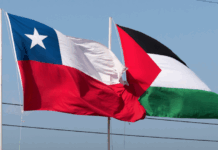By Dan McGarry in Port Vila
The government of Vanuatu has convened three major tourism and travel stakeholders this week to announce a major shakeup in the sector.
Dubbed Shared Vision 2030, the plan commits Air Vanuatu, the Vanuatu Tourism Office, and Airports Vanuatu Ltd to an ambitious expansion strategy.
The Vanuatu Daily Post reported yesterday that Air Vanuatu intends to build an actual international fleet of up to eight jet aircraft. Airports Vanuatu Ltd has almost completed the essential Bauerfield runway upgrade. It is also lining up support for an ambitious new facility plan that can accommodate and service Air Vanuatu’s fleet.
READ MORE: Vanuatu and New Caledonia hold historic talks on tourism
For its part, the Tourism Office is being asked to transform itself into a more dynamic organisation, in touch with modern travellers and modern tech.
The government is being asked to stump up no less than VT500 million (NZ$6.6 million) in new money every year for the next five years to back this play.
The plan unveiled on Monday raises countless questions.
Where will Air Vanuatu find the pilots? How will it finance the planes? A new Airbus A320 lists for US$101 million, and a Boeing 737-800 costs about a million dollars more.
Leasing isn’t cheap
Leasing even one isn’t cheap. How will Air Vanuatu afford 6 of them?
A new terminal isn’t just a building. It’s the air traffic control centre, hangars, fuel depot, service bays, fire-fighting and emergency response facilities, food preparation, administration… the list is long and exacting.
All things considered, a price tag of more than VT10 billion (NZ$130 million) won’t be hard to reach.
The argument in support of the plan is simple. We can either grow now, or run the risk of our economy withering away.
Vanuatu’s economy suffered badly in 2018. Few businesses thrived, and many struggled. VAT revenues are one of the most reliable measures of overall commercial activity. They don’t look good.
Although monthly revenues have surged a few times over the same period in 2017, 2018 revenues overall were only about 10.2 percent higher than last year.
That’s a problem, because revenues should have risen at least 15 percent overall, given the 20 percent rise in the tax rate (2.5 is 20 percent of 12.5, so the rate rise is 2.5 percent, but revenues should increase by 20 percent). The trendline is pointing downward, when it should be sharply upward.
Tourism slump
Much of the commercial slowdown comes from slumping tourism revenues among traditional players. Larger resorts and hotels are struggling, to put it politely. The lucky ones are seeing 50 percent occupancy rates. The unlucky ones are far worse off.
Reduced tourism activity has effects throughout the economy, dragging industry, services and agriculture down with it.
Tourism officials are quick to crow about ‘record’ air arrival numbers. The numbers are real, but they hide a number of problems. First, these numbers have only just managed to rebound from 2014 levels, before the twin catastrophes of cyclone Pam and the Bauerfield runway debacle decimated air arrival numbers.
Second, everyone’s strategic plan expected continuous growth through that period. But we’re barely ahead of where we were in 2014. That puts us almost five years behind schedule.
Lastly, travellers are planning differently. They’re not following the beaten path as much. The advent of social media changed the way people decide where to go, how they book their reservations, and what they do when they’re away.
Referrals matter more than ever. More people ask for input about possible destinations on social media than ever before, and a large number of people decide where to go based on what they hear.
AirBnB is affecting traditional booking patterns enough to make it hurt, especially for larger resorts. Unless arrival numbers rise significantly, it will be impossible to convince new investors to come, and some existing investors could well begin planning an exit.
No middle ground
The plan’s proponents argue that Vanuatu can either rise in popularity, or expect to be ignored by the next generation of travellers.
And based on which path we choose our economy will either grow, or shrink. There’s no middle ground, they say.
But we have to walk before we run. Tourism and travel industry experts tell the Daily Post that the first priority is getting maximum value from existing markets. Expect to see service to Melbourne announced soon, and increased flights to all existing destinations.
One insider told the Daily Post that there is a shortage of aircraft worldwide. Forbes reports that in the USA, for example, “More than three-quarters of the fleet for sale is more than a decade old, [with a] decreasing quantity and quality of less-than-decade-old aircraft.”
Vanuatu will have to acquire ‘new iron’ for its own routes, rather than trying to seduce outside airlines to come here.
One major challenge that has yet to be addressed is the 140 new pilots who will be needed to fly the fleet.
The greatest shortage in the aviation industry right now is pilots. This means more competitive salaries and better working conditions will be needed to convince commercial plots to come, and our own pilots to stay.
Air Vanuatu is holding a press conference today to discuss these and other issues. The Daily Post will be following the story as it develops.
Dan McGarry is media director of the Vanuatu Daily Post group.










































